
TIMELINE
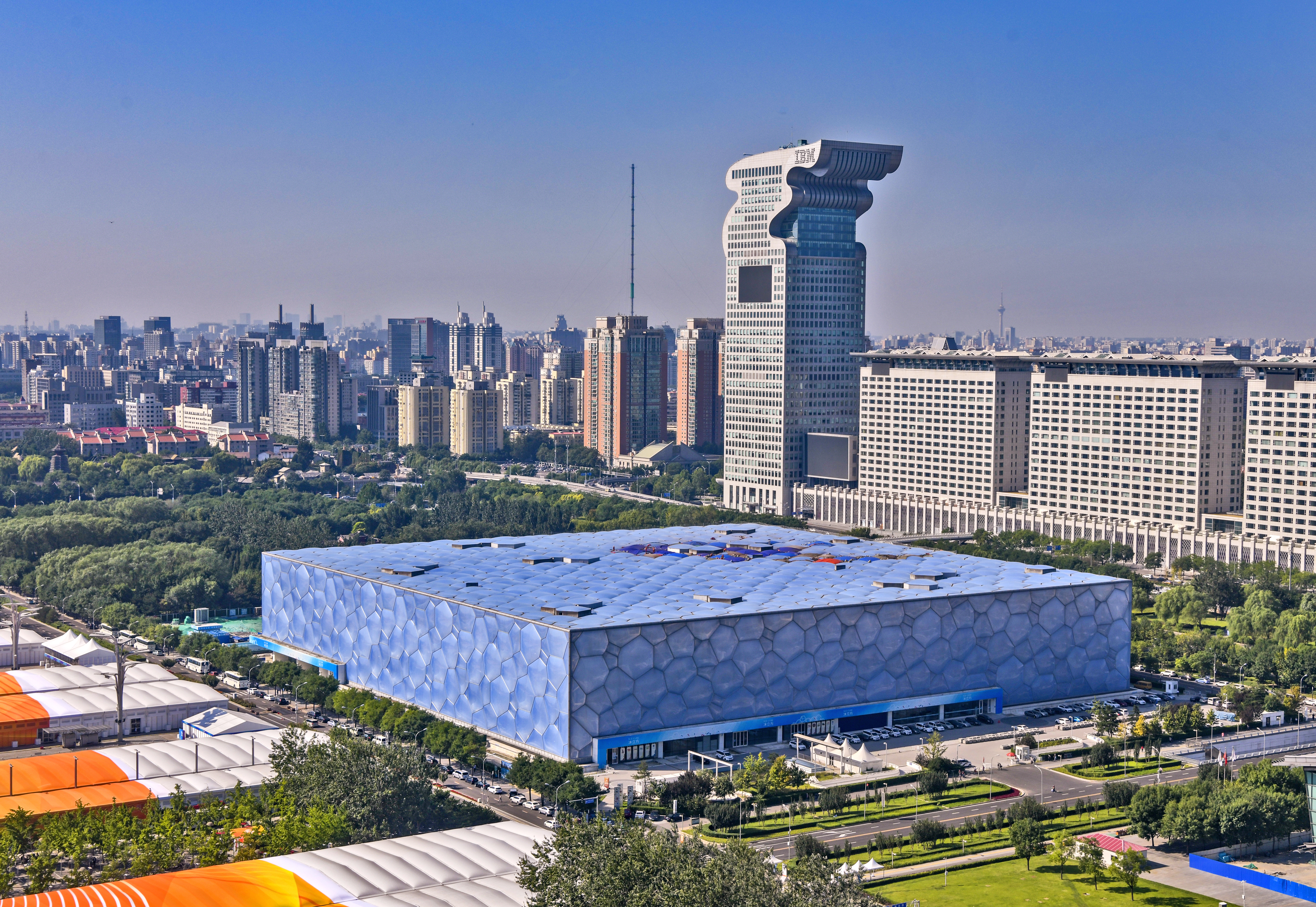
The National Aquatics Center (AKA the Water Cube/Ice Cube) is an iconic venue first built for the 2008 Beijing Olympics and later revamped for the 2022 Beijing Winter Olympics.
It is the only Olympic facility funded by compatriots from the Hong Kong Special Administrative Region, the Macao Special Administrative Region, Taiwan, and overseas Chinese.
Hailed as one of the "New Architectural Wonders of China," it is one of Beijing's new representative structures.
Established in August 2007, Beijing National Aquatics Center Co., Ltd., a wholly-owned subsidiary of Beijing State-Owned Assets Management Co., Ltd., is responsible for the operation and management of the National Aquatics Center.
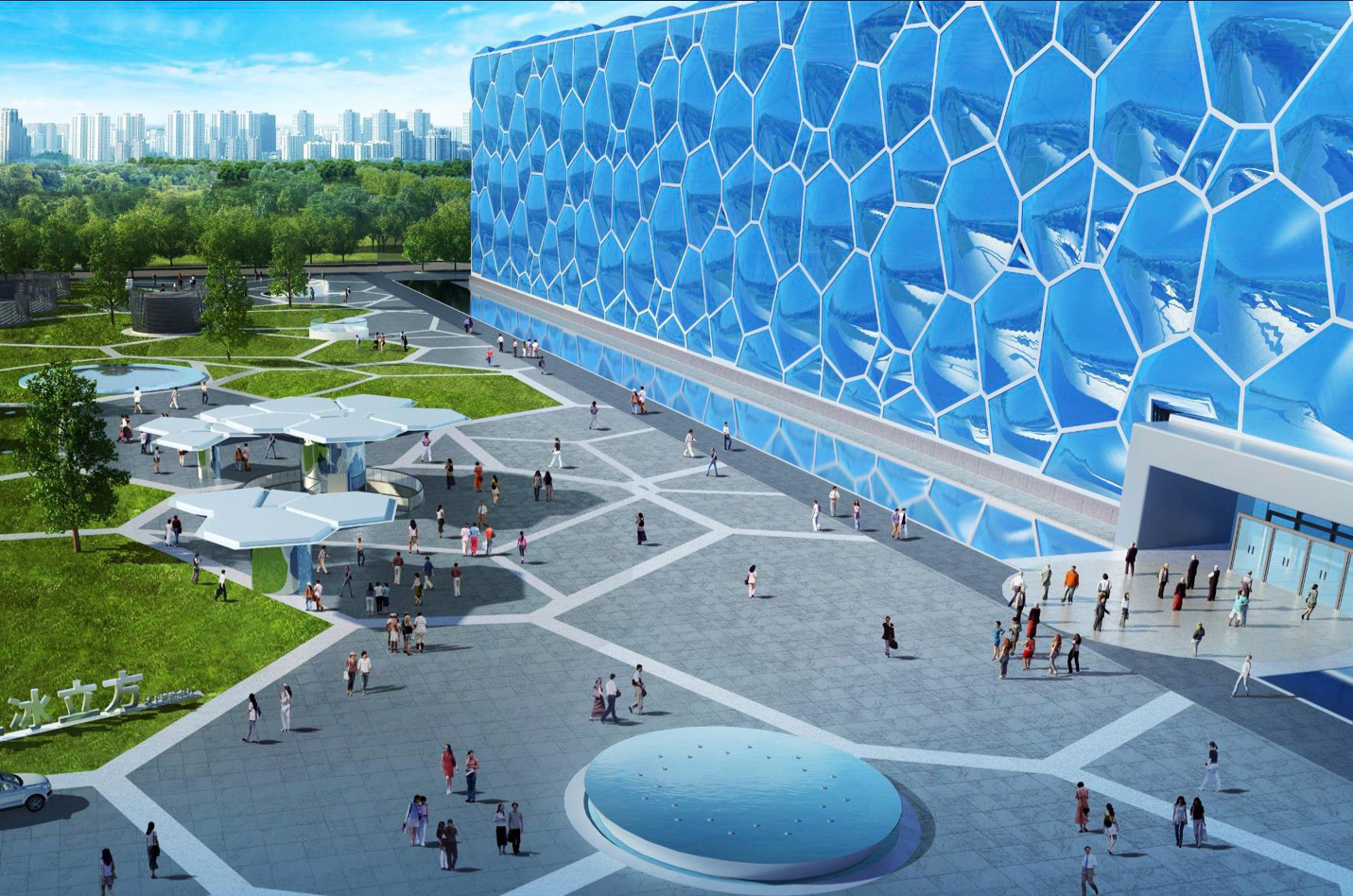
Following the guiding principle of "maintaining the operation of the Olympic venues well after the games" issued by the Beijing Municipal Committee of the Communist Party of China and the People's Government of Beijing Municipality, the Beijing National Aquatics Center Co., Ltd. aims to become "a world-class venue operation service provider." The team continuously explore how to make full use of the Olympic venue in a comprehensive, recycled, and sustainable manner to provide a Chinese solution for the reuse of the Olympic venues. In 2019, the company was awarded the annual "Sport and Sustainable Architecture" by the International Olympic Committee.
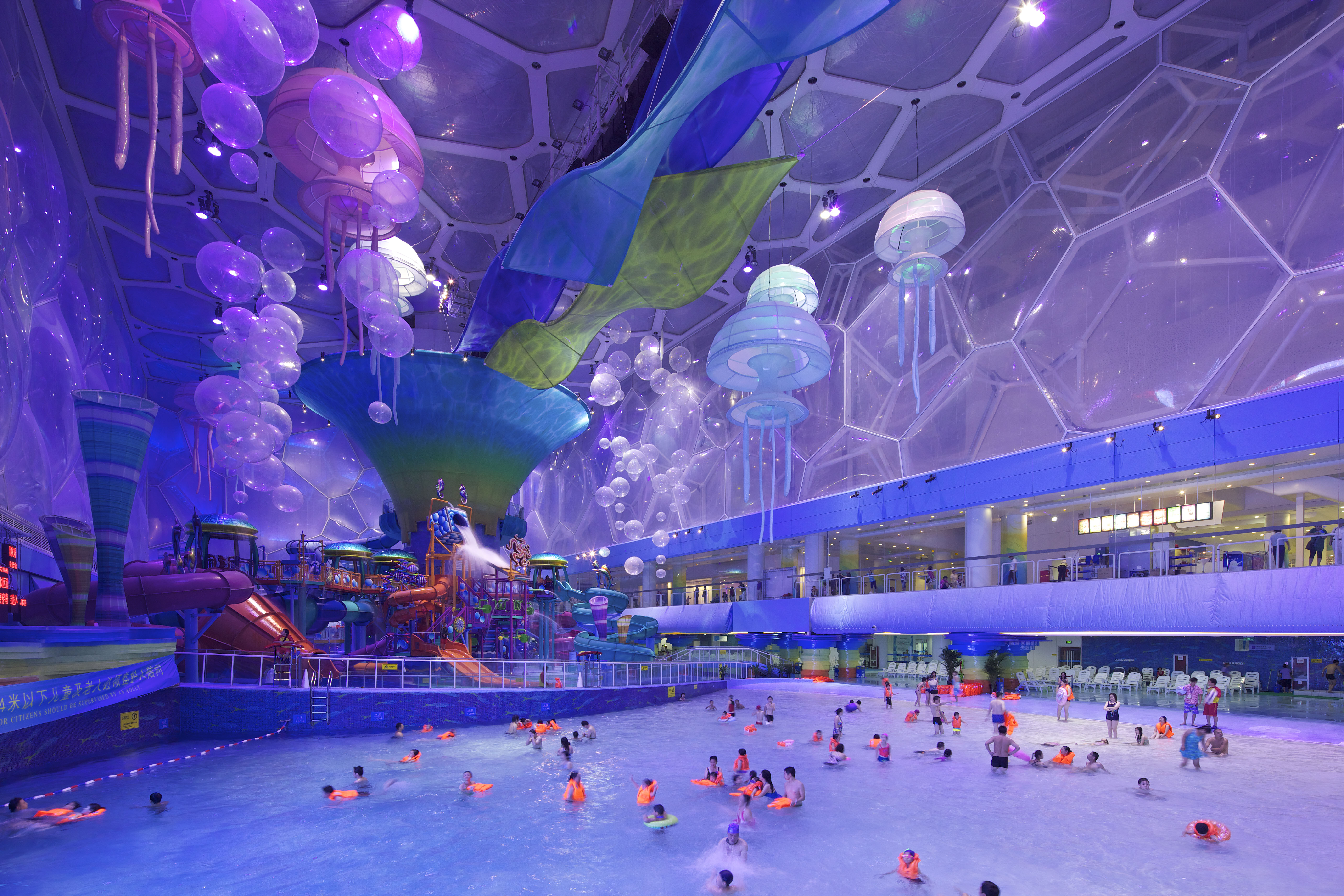
Since the opening of the National Aquatics Center after the games, it has continued to expand its business scope. It has since been converted to hold various sports events, tours, large-scale activities, market development projects, franchise events, a water park, and an ice rink. As of the end of 2020, the center had received 26 million tourists, hosted more than 1,600 events, and provided swimming services to about 2.6 million people.
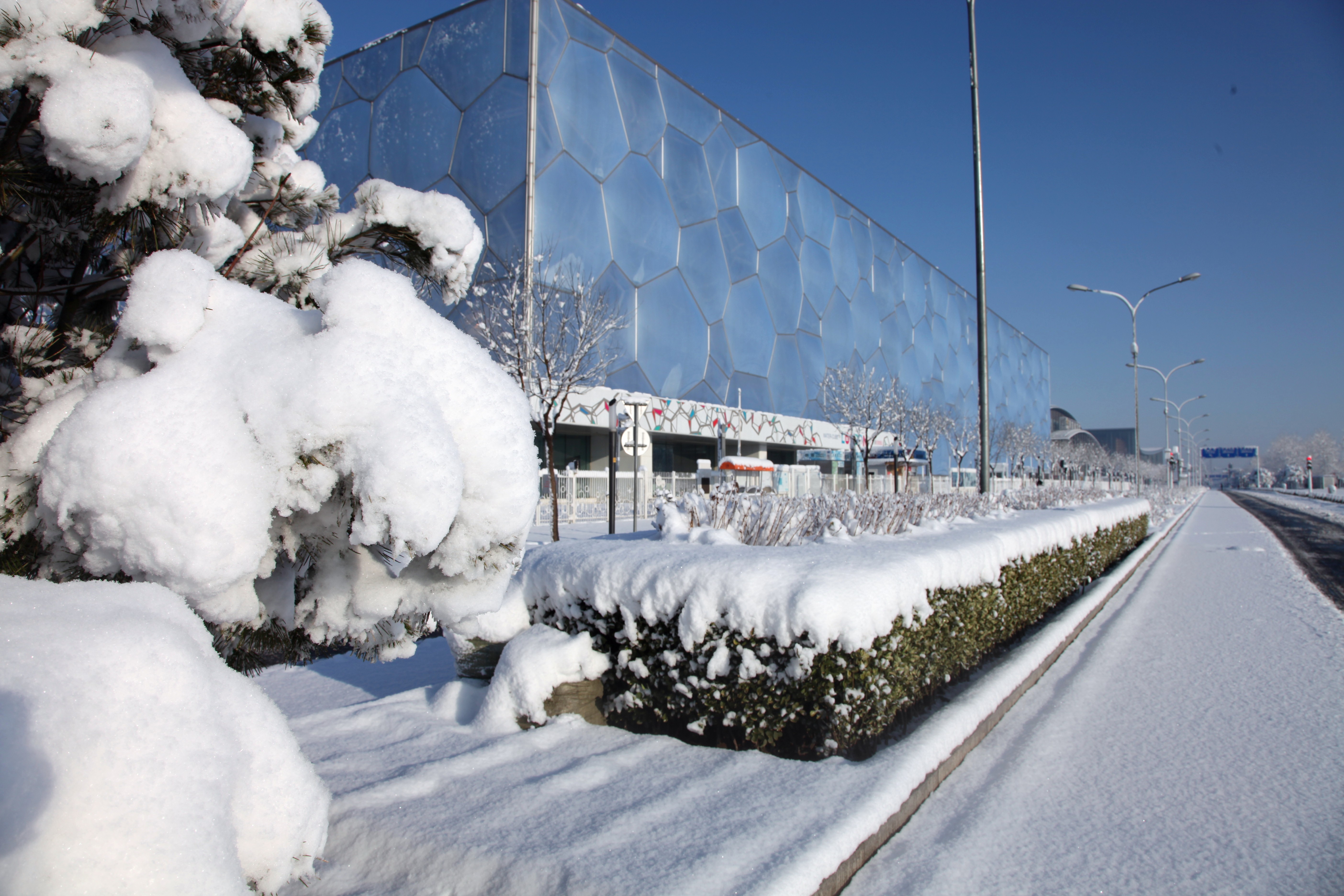
Following the venue retrofit for the 2022 Beijing Winter Olympics, the National Aquatics Center has achieved a comprehensive upgrade of its operational capabilities based on the "water-to-ice conversion" project, and successfully held curling competitions in 2019 and 2021. The center, as a a venue of both 2008 and 2022 Olympic Games, will continue to serve as a model for reusing Olympic venues after the games and innovate and develop the Chinese solution for the provision of services for water and ice events.
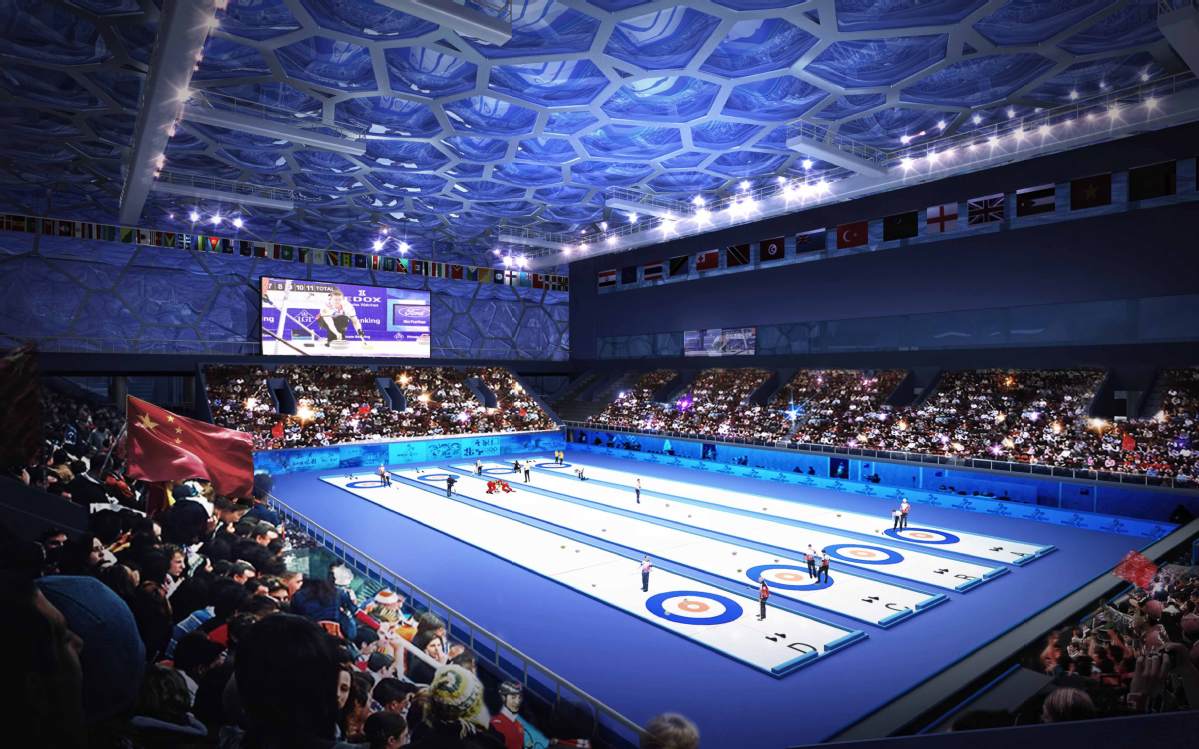
The 2008 Beijing Olympic Games' icon venue-Water Cube, has transformed into "Ice Cube", which is the world's first Winter Olympic Stadium to create curling ice in a swimming pool.
In the Olympic and Paralympic Winter Games, "Water Cube" is set to serve as the curling venue.
The construction of the convertible structure of the Water Cube was completed on Aug. 1.
Following on from the completion of the major construction, the Water Cube will now finish the renovation of sports lighting, ice-making, and air-conditioning systems in the curling competition venues in October, and will hold the China Youth Curling Championship in December to debut.
With the convertible structure of the ice rink and the removable ice-making system, the venue in the future will have both water and ice functions.
After the ice-making equipment and ice layer are removed, the ice rink can be reduced to a swimming pool.
According to the plan, water sports will take place in spring, summer, and autumn, and ice sports will happen during winter.
After the renovation, the venue will receive an intelligent system upgrade as well. The new intelligence system will effectively monitor the changes in the thermal, humid and lighting environment in the competition hall.
It will ensure that under any heat load conditions, the arena can react to changes and provide dynamic heating throughout the indoor environment. For example, when the ice surface temperature of curling track reaches minus 8.5 C, the temperature above 1.5 m of ice surface remains at 10 C, the relative humidity does not exceed 30%, and the temperature in the stands is 16 C to 18 C.
The Water Cube has also carried out a research project on architectural acoustics of the curling hall, in which the most advanced building sound-absorbing materials will be used. Athletes who are more than 40 meters apart at both ends of the track can communicate clearly through shouting.
Underground in the South Square of the Water Cube, the Ice Cube ice sports center is under construction at the same time and is estimated to begin trial operation next May.
The Ice Cube ice sports center will not only provide a competition guarantee for the Olympic and Paralympic Winter Games but also is expected to be used by 100,000 ice sports enthusiasts after the Games.
The "Experience Beijing" ice sports testing program came to a successful end on Saturday as Beijing 2022 welcomed its 300-day countdown. Events of six ice sports were staged in five Olympic venues in downtown Beijing during the 10-day tests.
With three of the venues being legacies of the 2008 Summer Games and advanced technologies in place, Beijing manifests its determination to host an environmentally-friendly Games that are also safe under COVID-19 scenarios through the testing program.
Transferable stadiums
How long does it take for a basketball court to be converted into an ice hockey rink?
The answer from the Wukesong Sports Center is -- six hours.
In six hours, the stadium that once witnessed Team US beat Spain for men's basketball gold in 2008 can set the stage for women's ice hockey competitions, with quick ice-making and adjustment in the dehumidification system.
"That's very good for the whole sustainability of the games and going forward," said William Freyr Huntingdon-Williams, a diplomat invited to watch a test game at the venue.
"Now the newest thing here, of course, is the new technology in ice-making, which we've been told is much more environmentally friendly, which we're very pleased," the first secretary and deputy head of mission at the Embassy of Iceland added.
Huntingdon-Williams is referring to using carbon dioxide instead of ozone layer-harming Freon as refrigerants in ice-making, which will reduce carbon emission equivalent to that of 3,900 cars a year, cutting the number to nearly zero.
The technology is also applied in the Capital Gymnasium, a 53-year-old venue renovated to host figure skating and short-track speed skating competitions. Both events' top skaters will compete on the same rink, but with different requirements of the ice surface.
According to Remy Boehler, head of the ice-making team, in preparation for the Beijing 2022 Winter Games, figure skaters need "softer" ice to better support jumps, while short track speed skaters favor harder ice for more speed.
With the two sports being contested only five hours and a half apart on Day 3 and taking turns to put on a show on the rest of the competition days as the latest Beijing 2022 schedule indicates, a smooth transition is essential to setting the stage for skating feasts.
"This is the only venue that has to switch between two sports in the middle of a day, which gives us huge stress during these testing events," said Ding Dong, head of the Capital Gymnasium venue operation team.
That's why the transition was conducted seven times in six days during the testing program to get fully prepared for the game-time scenario, and Boehler and his team only needed two hours to do so.
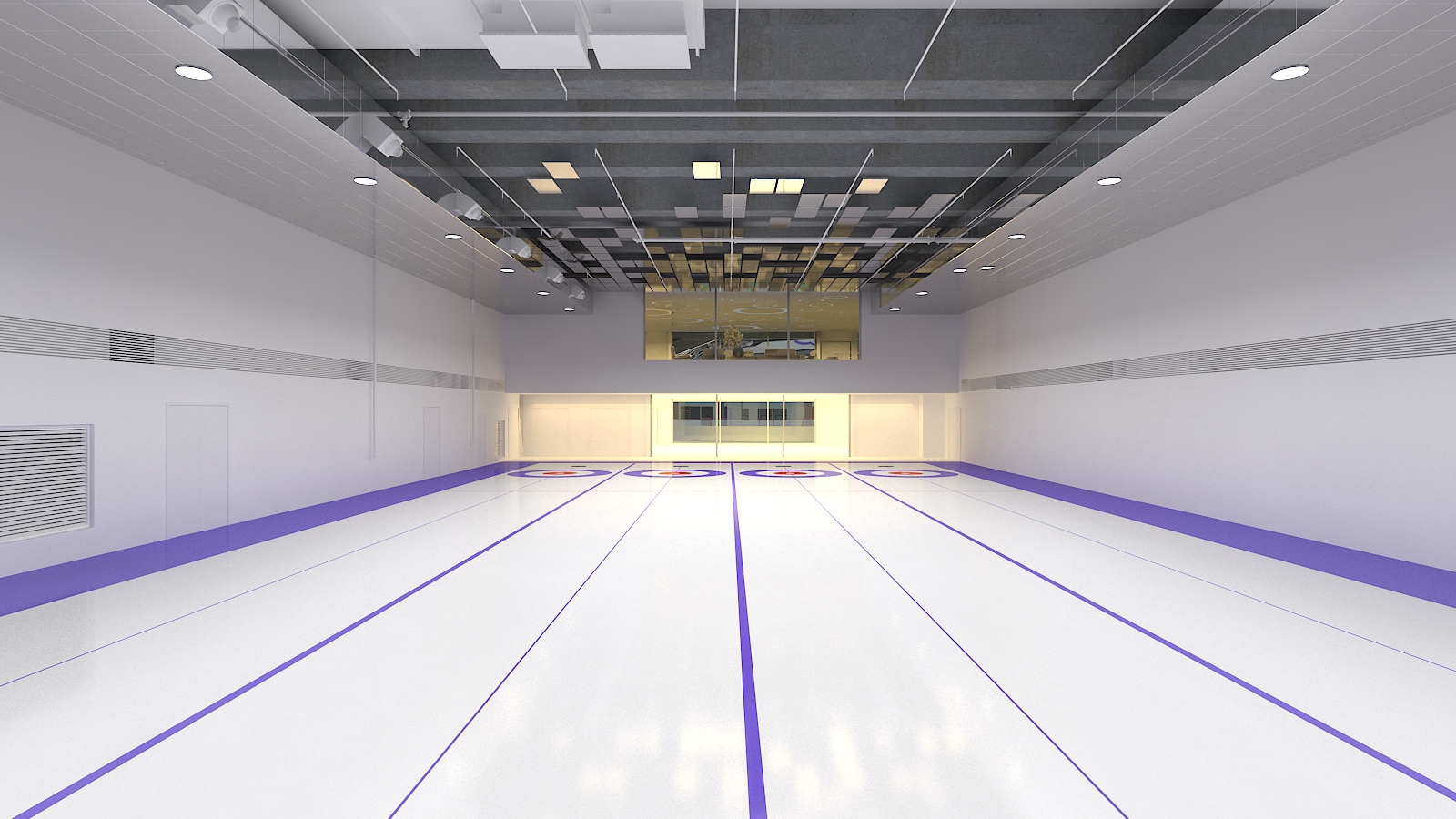
Also undergoing transformation was the National Aquatic Center, where Michael Phelps completed his eight-gold-winning epic back in 2008. The "Water Cube" was frozen into an "Ice Cube" for the first time in 2019 and later melted back in May 2020. In the past 10 days, it hosted test runs of curling events after the transferable rink was put up for curling events.
"Thanks to the Winter Games, the venue got its facility upgraded, and energy consumption lowered. Its new form will bring new income, and the cost of water-ice conversion is much lower than building a new venue," said Yang Qiyong, general manager of the venue.
Post-game utilization
Making stadiums transferrable is not only preparing for a successful Olympic Winter Games but also making sure they can satisfy people's different needs in different seasons.
Like Beijing 2008 did in leaving legacies for the city and the development of the sport across China, Beijing 2022 hopes to help fuel the passion for winter sports in the country and provide them with enough facilities to enjoy themselves.
As the only newly built ice sports venue in the Beijing competition zone, the National Speed Skating Oval boasts an ice surface of around 12,000 square meters. It can seat 12,000 spectators, making it the largest speed skating venue in Asia.
Apart from technology highlights, including using carbon dioxide in ice-making and precise controlling temperature and thickness of ice surfaces, the venue's multi-functionality also sets the example in post-game utilization.
Ma Jin, the design director of the ice-making project, told Xinhua that the ice in the oval had adopted a submodule control unit, dividing the ice surface into several areas and making ice according to varying standards.
During ordinary times, it can receive more than 2,000 citizens at the same time and be utilized for ice hockey, speed skating, figure skating, curling, and other ice sports at the same time.
"The purpose is to give full consideration to post-competition utilization and provide hardware support for mass fitness and to meet various needs," he said.
Similarly, the National Indoor Stadium features ice surfaces that can change size for standard ice hockey or figure skating field of play. In fact, the two surfaces were newly added to the 2008 gymnastics, trampoline, and handball venue for men's ice hockey competitions during Beijing 2022.
Hi-tech makes games safe and fun
Apart from Beijing's promise to host a "fantastic, extraordinary and excellent" Olympic Winter Games, "safe" is also a keyword as the COVID-19 pandemic is still ongoing. To ensure everyone involved is safe and provide the audience with the best possible watching experience, the organizers employed state-of-the-art technologies during the testing program.
Smart watch-like intelligent thermometers with chips inside are employed in the Wukesong Sports Center to monitor personnel's real-time body temperature. They can achieve preciseness of 0.05 degree Celsius and users can check their body temperature with taps on their phone.
In the National Indoor Stadium, with the help of 40 cameras and a 3D reconstruction of the visual, "free visual angle" technology allows spectators to choose their angle of watching matches. It also functions in refereeing and players and coaches reviewing the game.
There's also good news for broadcasters. With self-help obstacle avoidance navigation, they don't have to carry themselves heavy equipment thanks to logistics robots shuttling within the working area and canteen to transport items.
In fact, they don't need to bring them on-site in the first place. Cloud broadcast system enables them to edit, distribute and store all their materials remotely on the cloud and even live stream events with their program directors back in their own country.
Apart from that, journalists can interview athletes from a different room to avoid contact, and mix zones can also be set up remotely.
"We believe these technological innovations will bring Beijing 2022 to spectators all over the world in a more spectacular way," said Gao Bo from the media operations department of the BOCOG.
Public Welfare Awards
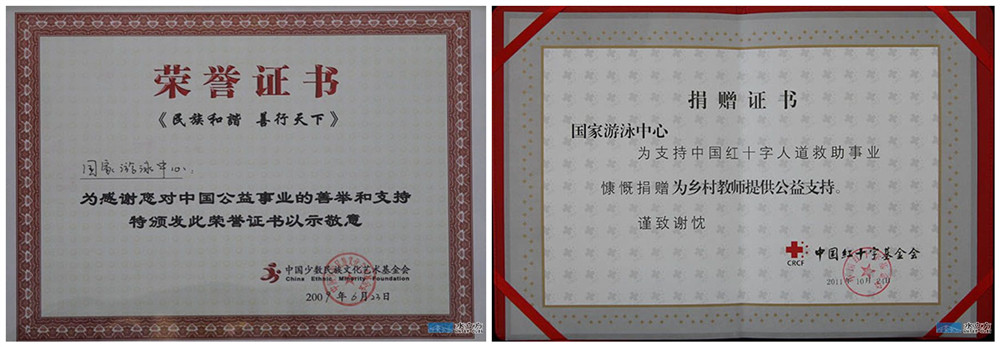
Certificate of Honor issued to the Water Cube on June 22, 2007, by the China National Culture Foundation for its kindness and support for China's public welfare undertakings (left)
Certificate of Donation issued to the Water Cube on October 24, 2011, by the Chinese Red Cross Foundation for its support of rural teachers (right)
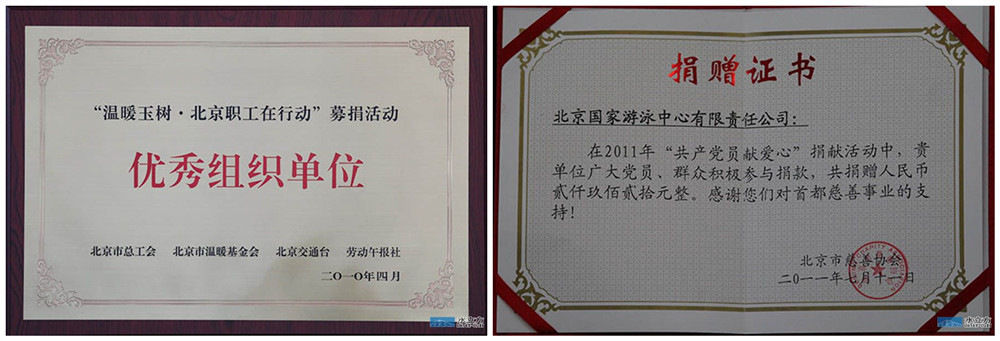
Outstanding Organization Award offered to the Water Cube in April, 2010 for the "Warm Yushu: Beijing Workers in Action" donation event (left)
Certificate of Donation issued to the Water Cube on July 17, 2011, by the Beijing Charity Association (BCA) for its support of the charity (right)
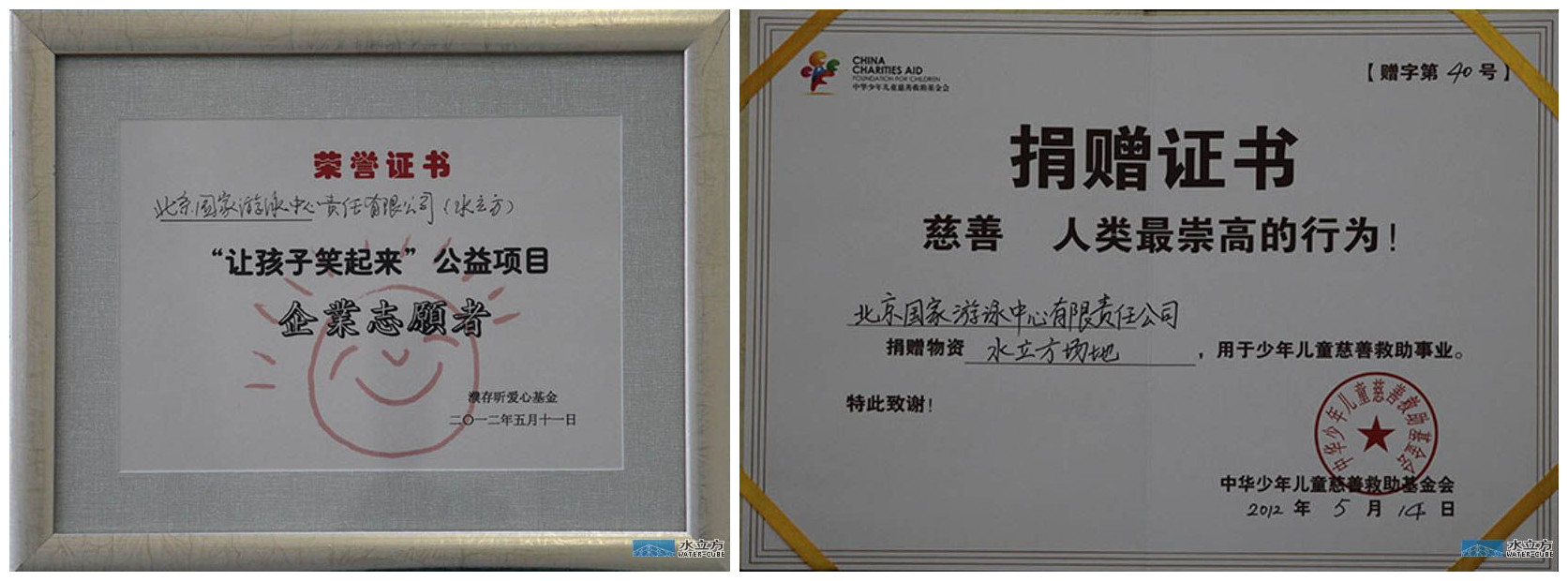
Enterprise Volunteer award for the public welfare project "Let the Children Smile" offered to the Water Cube in May, 2012 (left)
Certificate of Donation issued to the Water Cube on May 14, 2012, by the China Charities Aid Foundation for Children (CCAFC) for its provision of the venue for the children's charity (right)
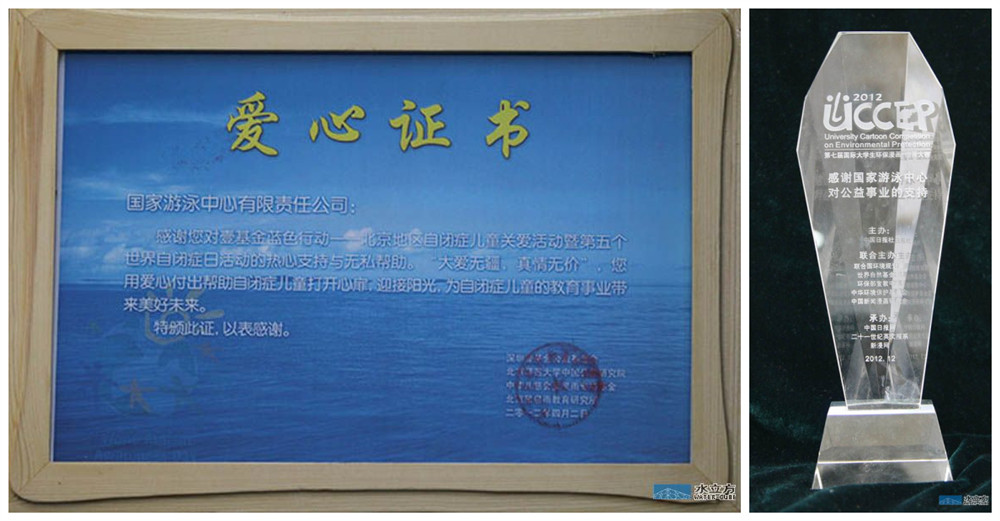
Certificate of Honor, awarded to the Water Cube on April 2, 2012, for its kindness and support for the Fifth World Autism Day event (left)
A trophy awarded to the Water Cube by China Daily for its charitable support (right)
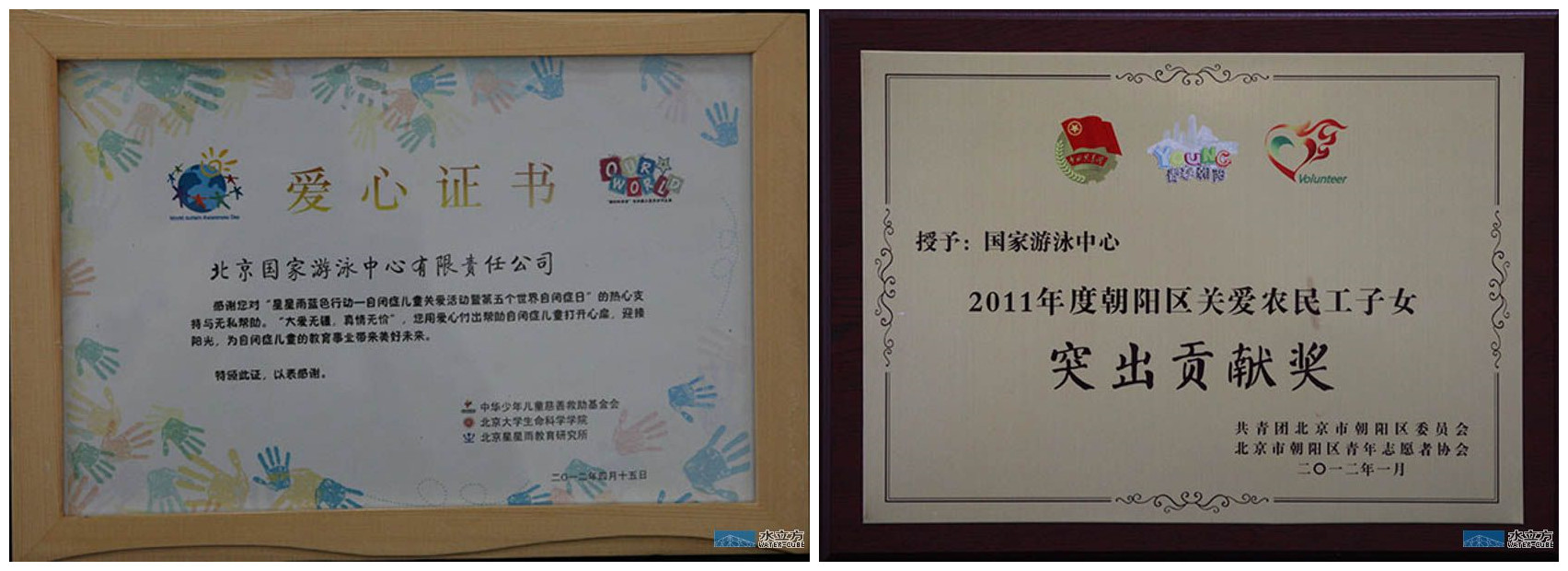
Certificate of Honor, awarded to the Water Cube on April15, 2012, for its kindness and support for the Fifth World Autism Day event (left)
Outstanding Contribution Award of the year (2011) for Chaoyang District, awarded to the Water Cube for its support of migrant workers'children (right)
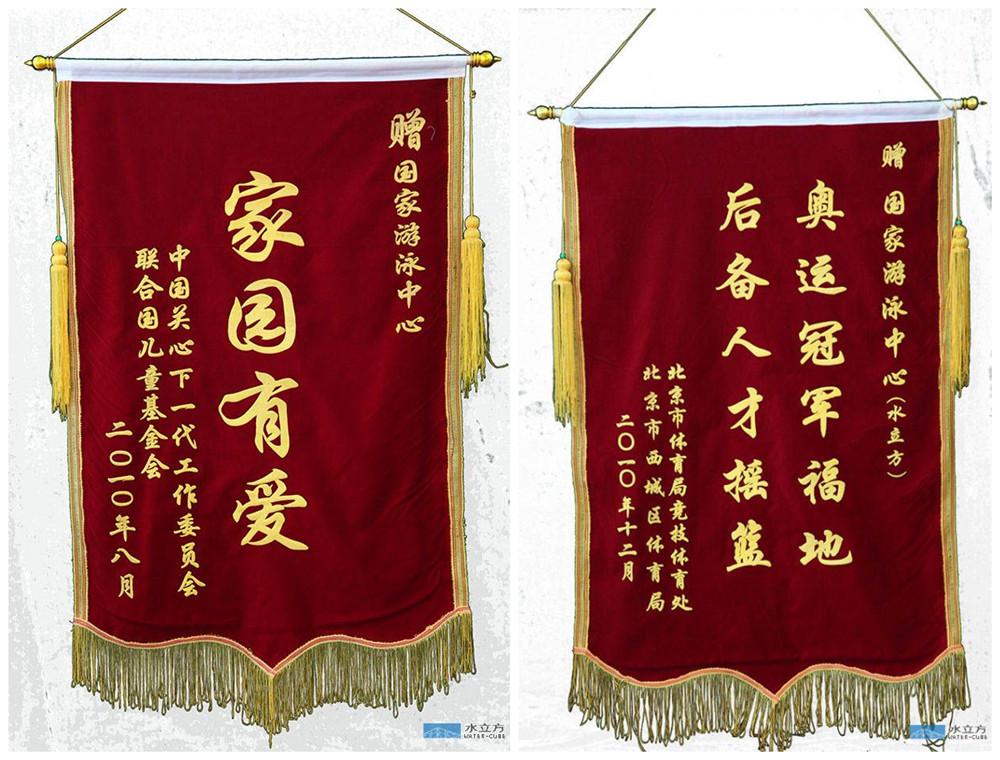
The Water Cube is granted the title "Home with Love" in August, 2010 (left)
The Water Cube is granted the title "The Blessing Land for Olympic Champions and the Cradle of Reserved Talents" in December, 2012 (right)

The China Great Home Action's "Caring and Co-construction Unit" award to the Water Cube in July, 2011 (left)
Certificate of Honor, awarded to the Water Cube on November 22, 2012, by the China Environmental Protection Foundation (CEPF) for its active participation in the "Golden Sun New Energy Charity Project" (right)
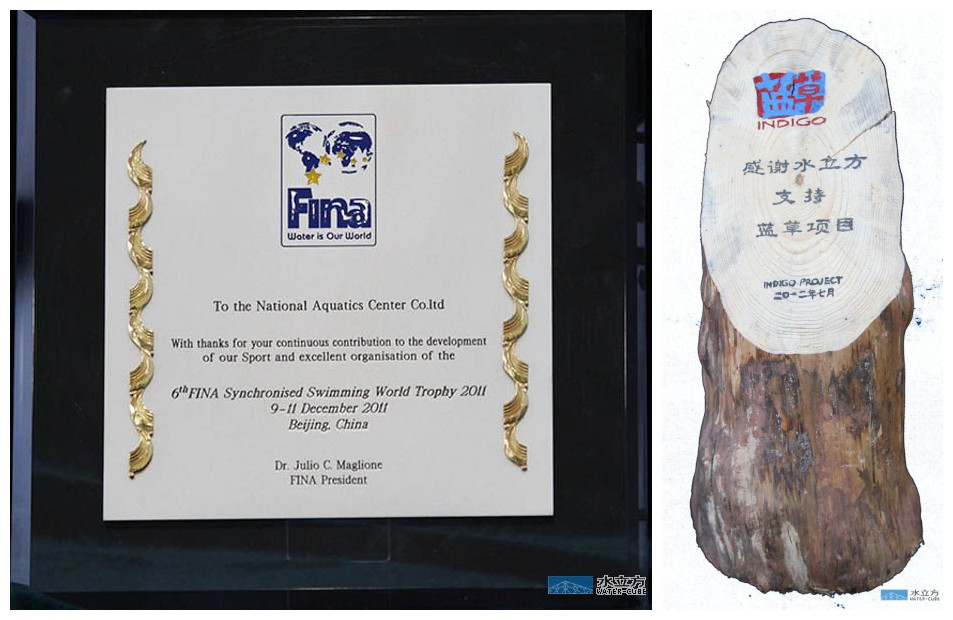
Management Awards
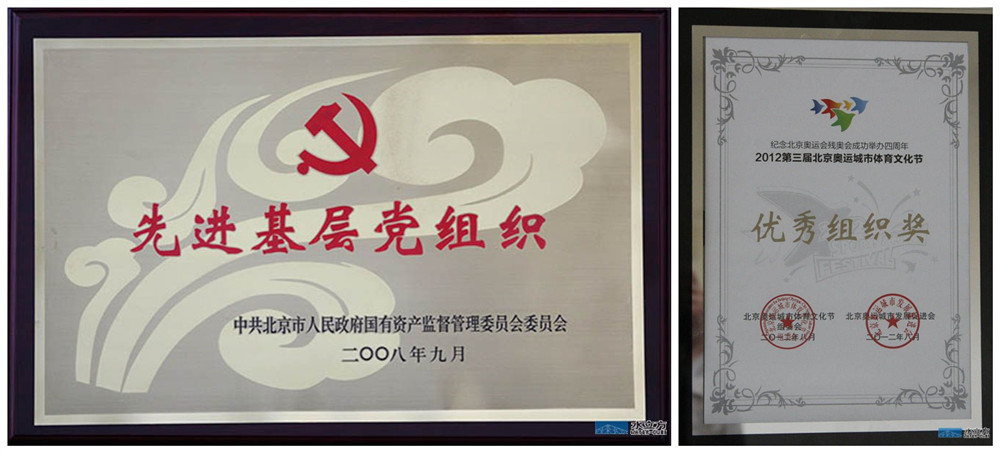
Advanced Primary-Level Party Organization award offered to the Water Cube in September, 2008 (left)
2012 Excellent Organization Award of the 3rd Beijing Olympic City Sports and Culture Festival (right)
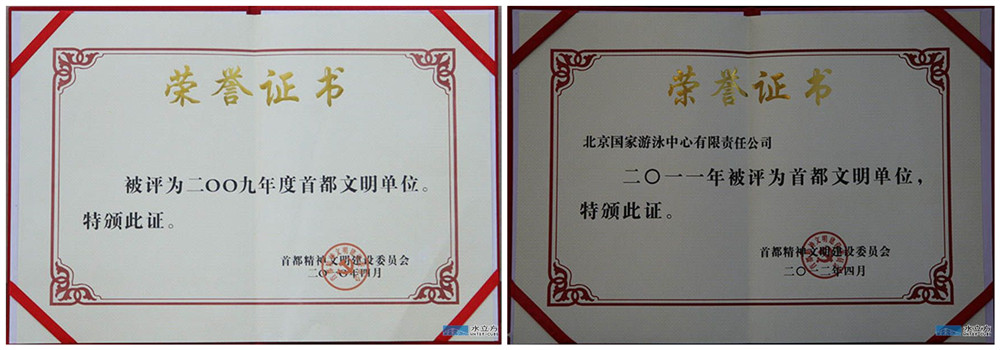
2009 Capital Role Model in Ethical and Cultural Progress (left)
2011 Capital Role Model in Ethical and Cultural Progress (right)
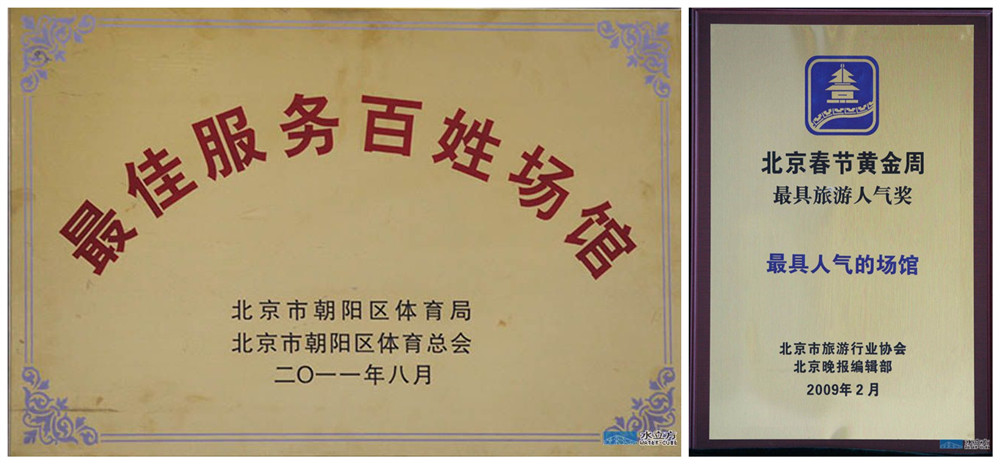
Best Venue for Public Services to the People offered to the Water Cube in August, 2011 (left)
Most Popular Venue of the Spring Festival Golden Week in Beijing offered to the Water Cube in February, 2009 (right)

Capital Role Model in Ethical and Cultural Progress (left)
The First "Top Ten New Tourist Brand Names of Beijing" Award offered to the Water Cube in June, 2010 (right)
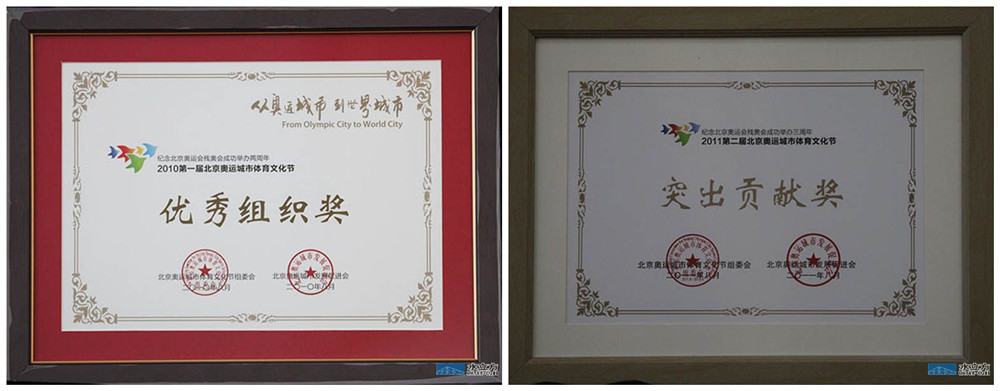
2010 Excellent Organization Award of the First Beijing Olympic City Sports and Culture Festival (left)
2011 Outstanding Contribution Award of the Second Beijing Olympic City Sports and Culture Festival (right)
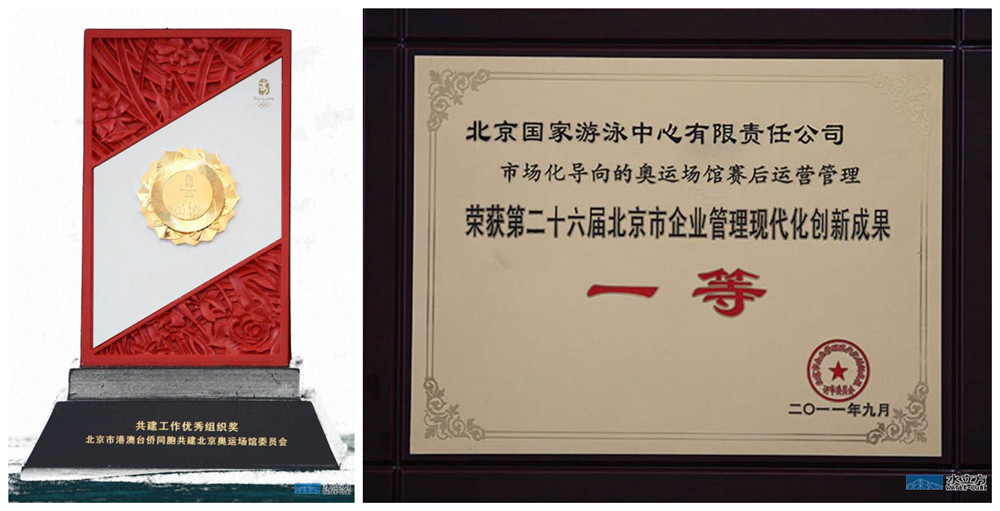
Excellent Organization Award in Crucial Work offered to the Water Cube by the Beijing Olympic Venue Co-construction Committee of Hong Kong, Macao, and Taiwan Compatriots and overseas Chinese (left)
The First Prize of the 26th Beijing Enterprise Innovation Achievements of Modern Management offered to the Water Cube in September, 2011 (right)
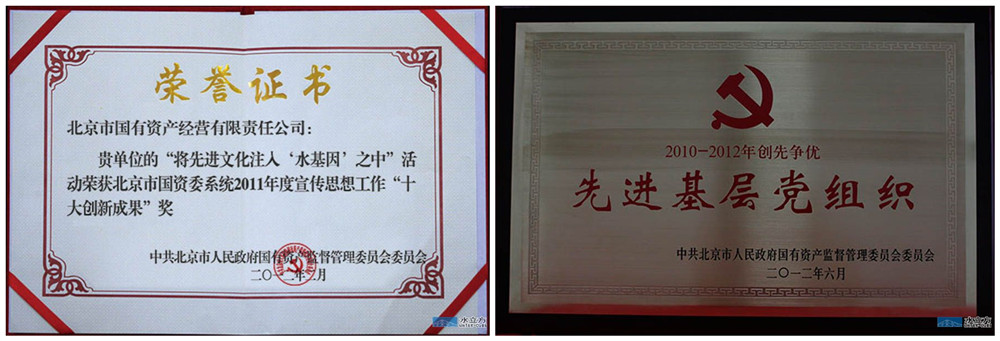
2011 "Top Ten Innovative Achievements" Award for publicity, by the State-owned Assets Supervision and Administration Commission of People's Government of Beijing Municipality (left)
2010- 2012 Advanced Primary-Level Party Organization in "Striving for Excellence" activity (right)
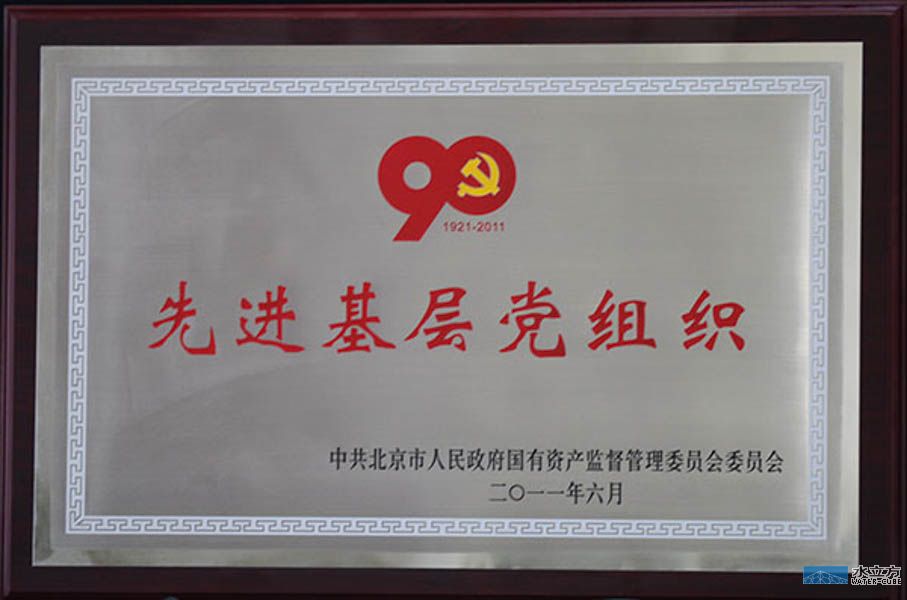
Advanced Primary-Level Party Organization award offered to the Water Cube in June, 2011, by the State-owned Assets Supervision and Administration Commission of People's Government of Beijing Municipality
_ueditor_page_break_tag_Architectural Awards
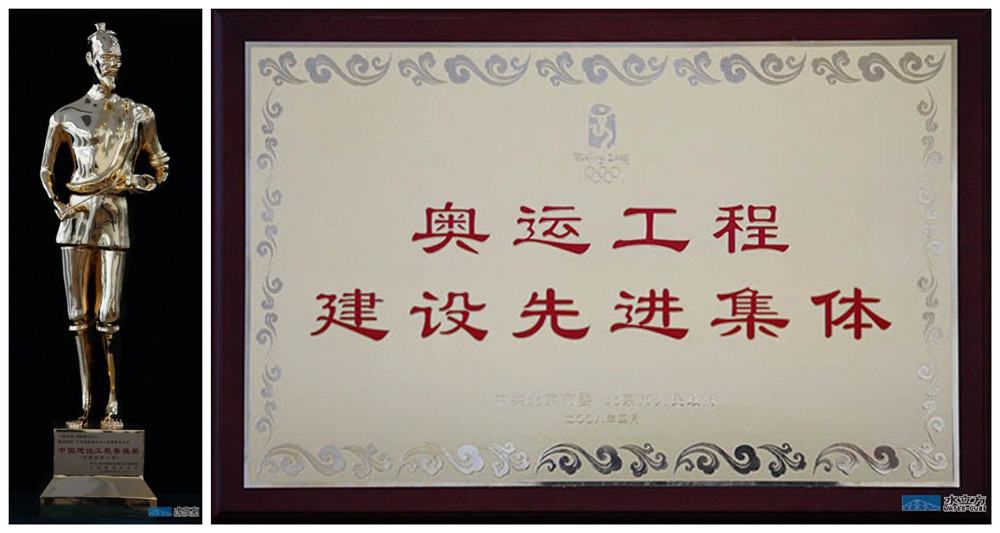
Exemplary Organization of Olympic Project Construction awarded to the Water Cube in April, 2008
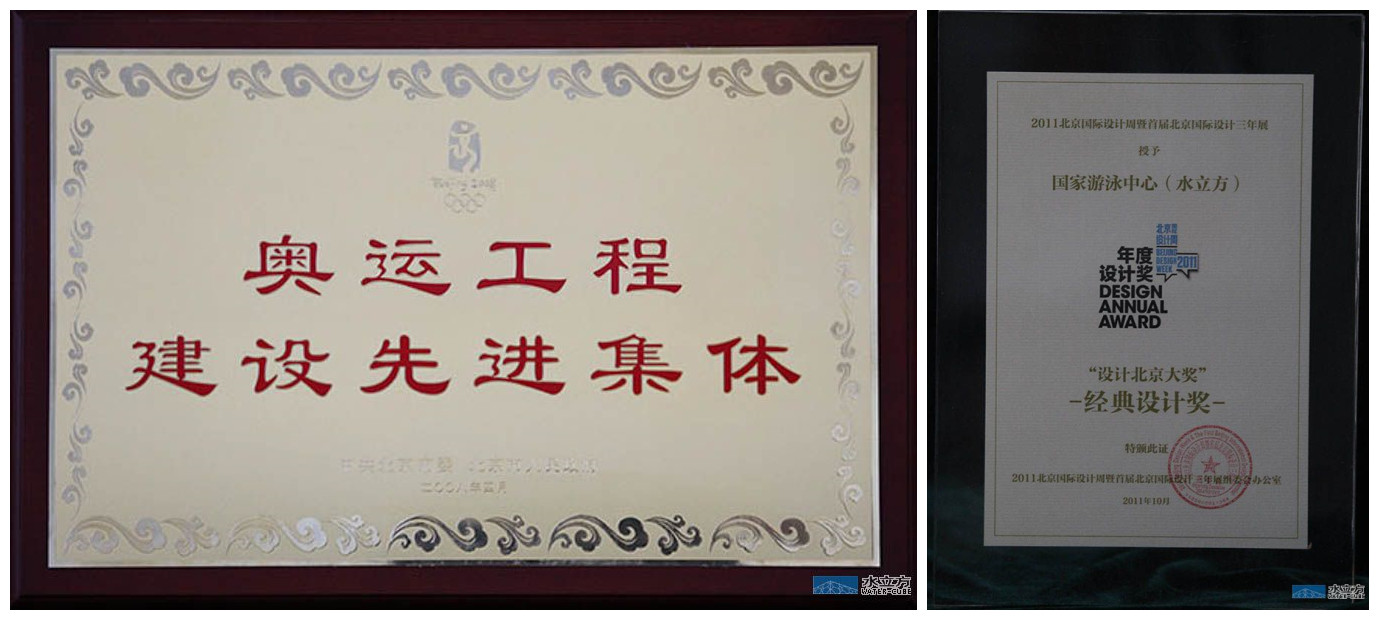
Exemplary Organization of Olympic Project Construction awarded to the Water Cube in April, 2008 (left)
2011 Classic Design Award for Beijing International Design Week (right)
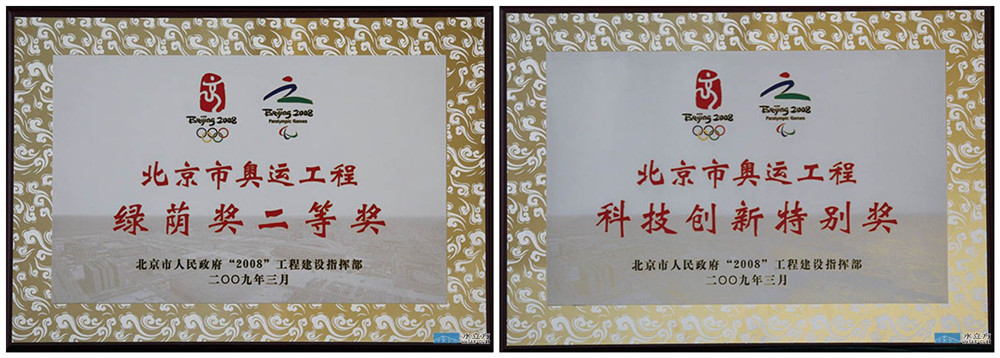
The Second Prize of Beijing Olympic Project "Green Shade Award" awarded to the Water Cube in March, 2009 (left)
The Special Award for Scientific and Technological Innovation of Beijing Olympic Project awarded to the Water Cube in March, 2009 (right)
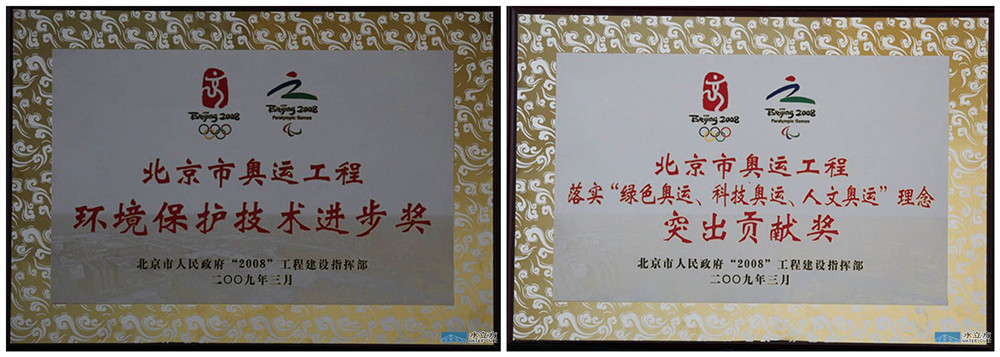
The Technological Progress Award for Environmental Protection of Beijing Olympic Project awarded to the Water Cube in March, 2009 (left)
Outstanding Contribution Award for the implementation of "Green Olympics, Sci-Tech Olympics, and Humanistic Olympics" concept of Beijing Olympic projects awarded to the Water Cube in March, 2009 (right)
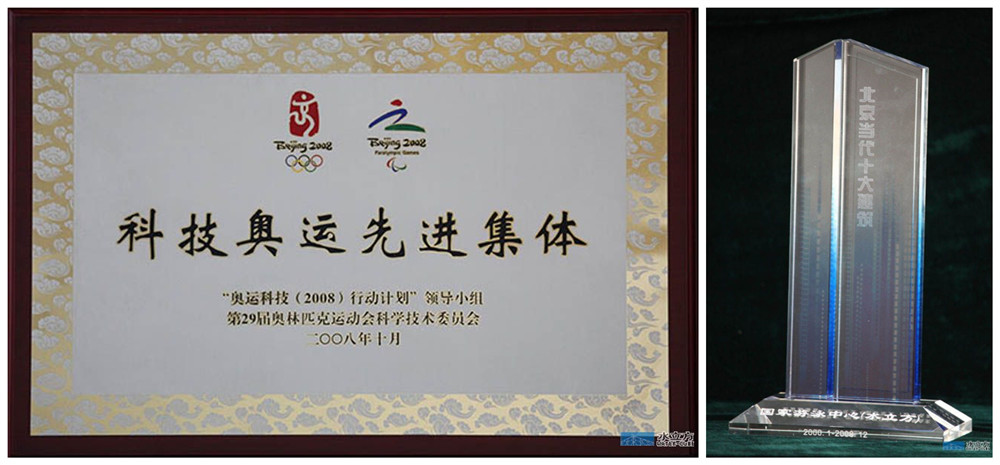
Exemplary Organization of Sci-Tech Olympics awarded to the Water Cube in October, 2008 (left)
Top Ten Contemporary Buildings in Beijing (right)
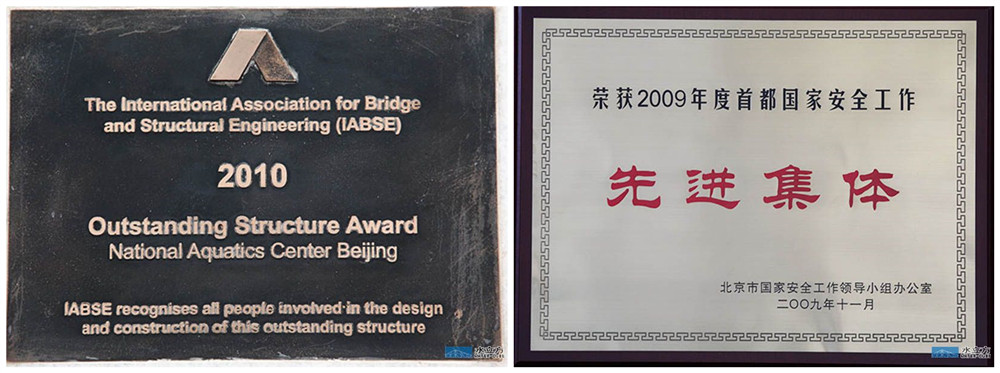
Outstanding Structure Award offered to the Water Cube in 2010 by the International Association for Bridge and Structural Engineering (IABSE) (left)
2009 Exemplary Organization of Capital's National Security Work (right)
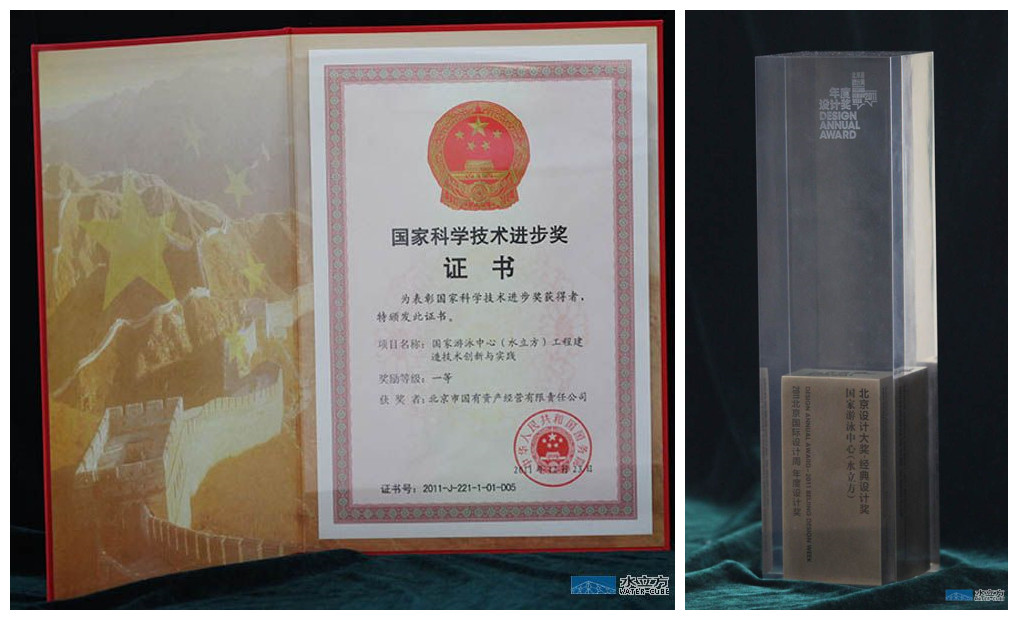
First Prize of the National Scientific and Technological Progress Award in 2011 (left)
Service Hotlines:
Visit: 010 - 84370112 / 84370116
Swimming: 010 - 84378912
Water Park: 010 - 84378966 / 84378963
Complaint:010 - 84370125
Venue Rental:010 - 84378842 / 84374571
Address: Olympic Park, 11 East Tianchen Road, Chaoyang District, Beijing
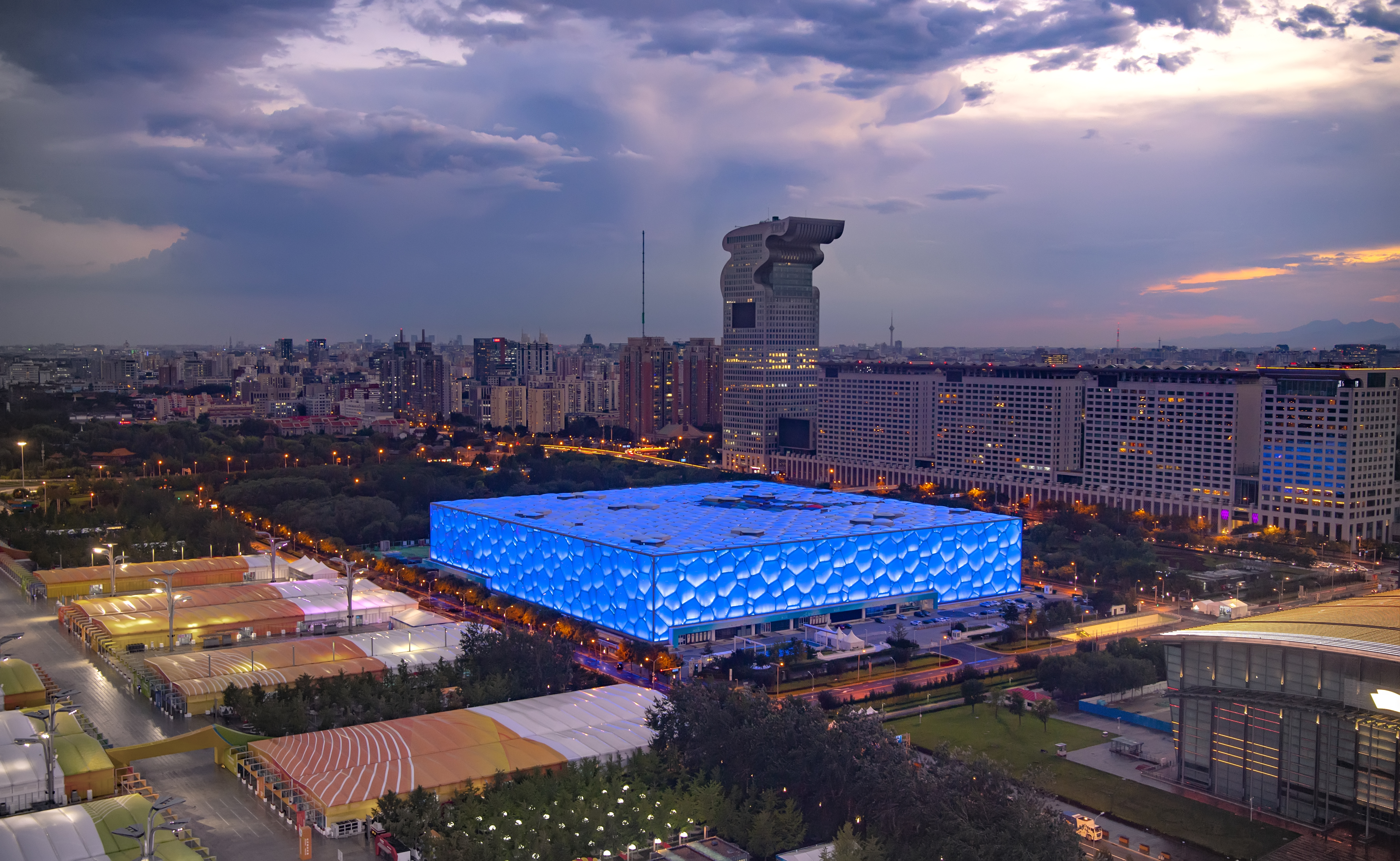
Competition Venue
The Olympic Competition Venue encompasses the Water Cube's core area. The hall is 116 meters long, 70 meters wide, and 30 meters high, covering 8,120 square meters in total. It has a swimming pool measuring 25 x 50 meters, with a depth of 3 meters, and a diving pool measuring 25 x 30 meters, with a depth of 4.5-5.5 meters.
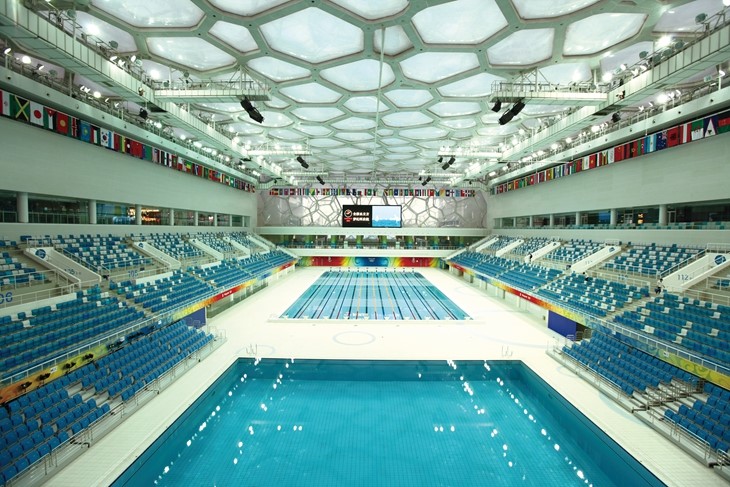
The stands feature more than 5,000 blue color seats, making them look like droplets of water from the pools below. The hall is well ventilated and combines natural light with a pleasing sound design for a pleasant, comfortable, and exciting experience.
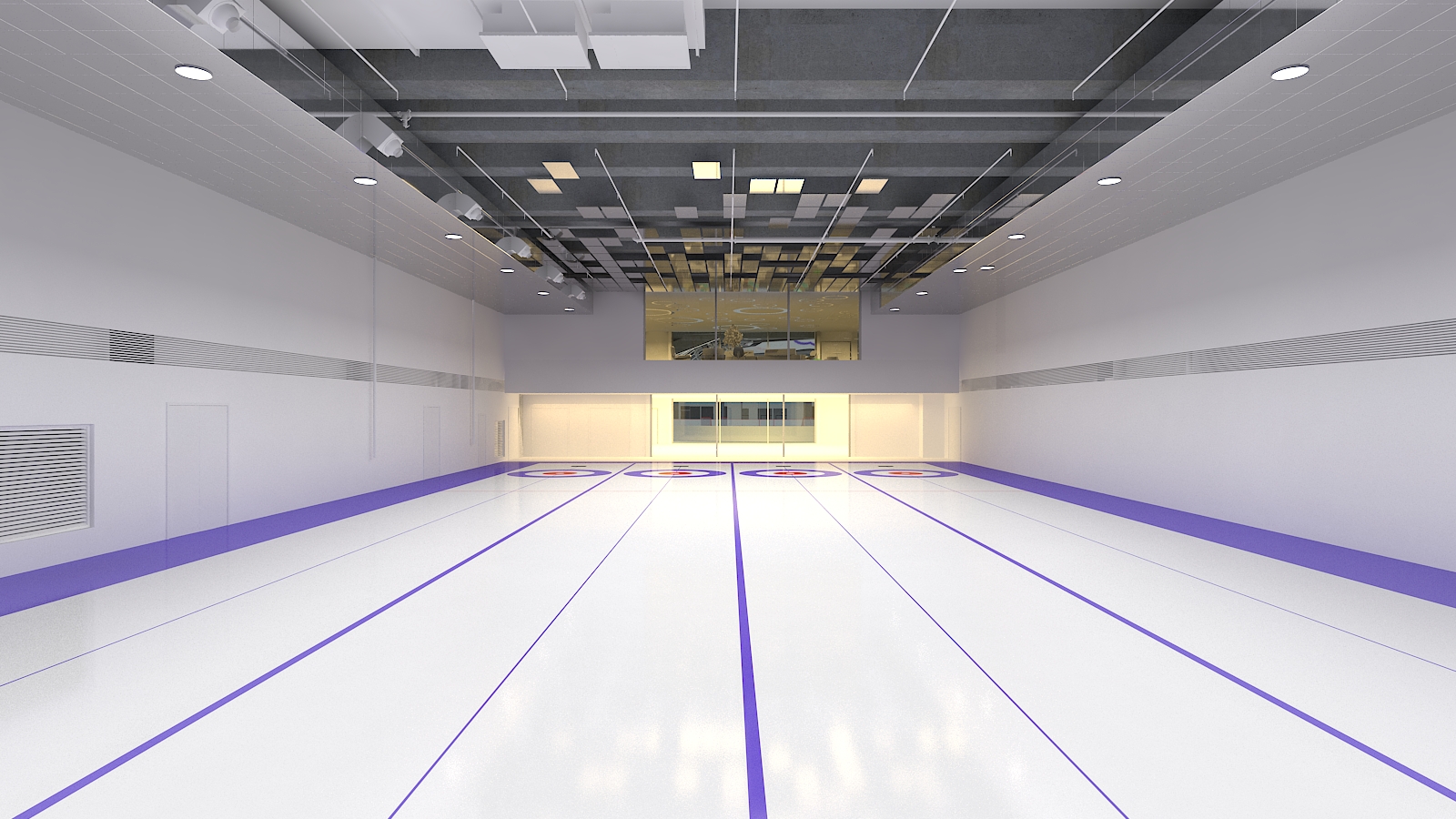
Warm-up Pool
The warm-up pool is built in full compliance with international competition standards and features both a deep area and a shallow area. The water is ozone-sterilized and supplemented by chlorine preparations to ensure optimal water quality. The ventilation system maintains a pool-side temperature of 22-26 degrees Celsius at all times.
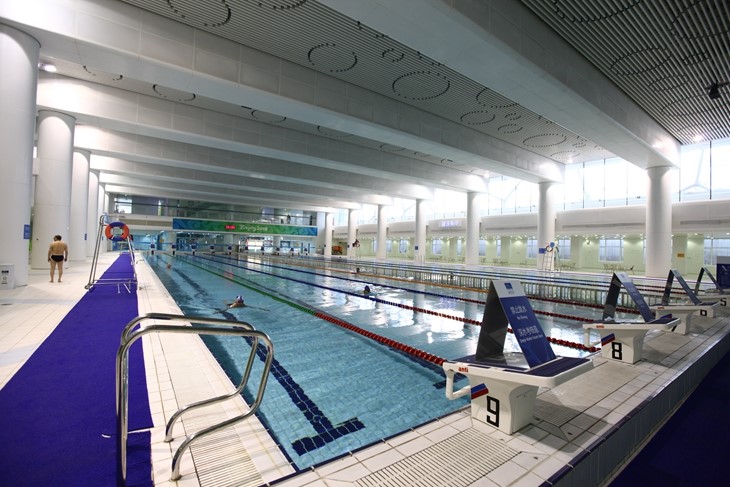
Multifunctional Hall
The Multifunctional Hall is situated at the comprehensive functional zone in the western flank of the Water Cube. The hall is 60 meters long, 40 meters wide, and 17 meters high, covering an area of 2,400 square meters and has three standard-sized indoor tennis courts. It has a seating capacity of approximately 1,000 as well as adequate space for exhibitions, providing a top-notch venue to host domestic and international culture and arts events.
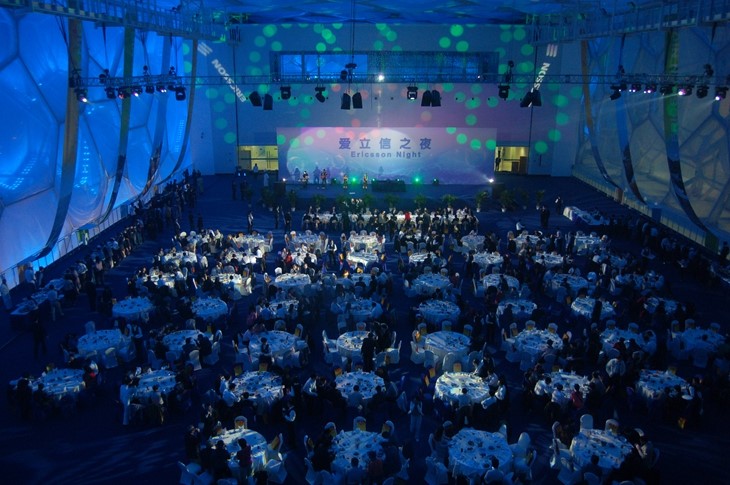
Water Park
As one of the largest Water Park in China and one of the world's most sophisticated indoor water parks, this venue features numerous recreational facilities and crystal-like water. Its location within the Water Cube also allows visitors to take in the charm of this massive and magical structure.
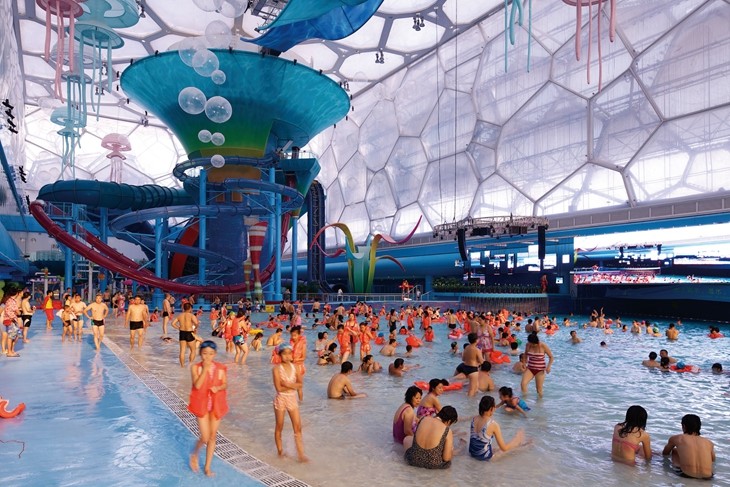
Exhibition in Commemoration of the Support to the 2008 Beijing Olympics from compatriots from Hong Kong, Macao, Taiwan, overseas Chinese, and foreign nationals of Chinese origin
This exhibition shows how the Water Cube was the only Olympic venue to be built using donations from compatriots fromHong Kong, Macao, Taiwan, and overseas Chinese. The exhibition's photography captures how the sons and daughters of the Chinese nation generously donated their money to the Beijing Olympics and for the construction of the Olympic venue. The pictures rekindled feelings of the kith and kin between the Chinese people.
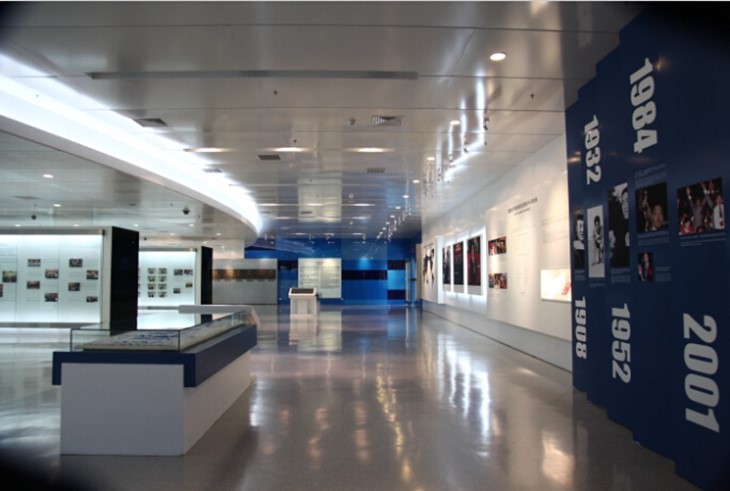
Exhibition in Commemoration of the Construction of the Water Cube, the Swimming Event Venue of the Beijing Olympics
This exhibition is situated on the fourth floor of the eastern side of the Water Cube's South Building. Covering nearly 300 square meters, the exhibition area boasts top-rate facilities and specialized and systemized services run by a professional operating team.
The exhibits closely relate to swimming and display their functions for humanistic and artistic exchange. The area is also home to commercial operations that span teaching, recreation, and communication activities.
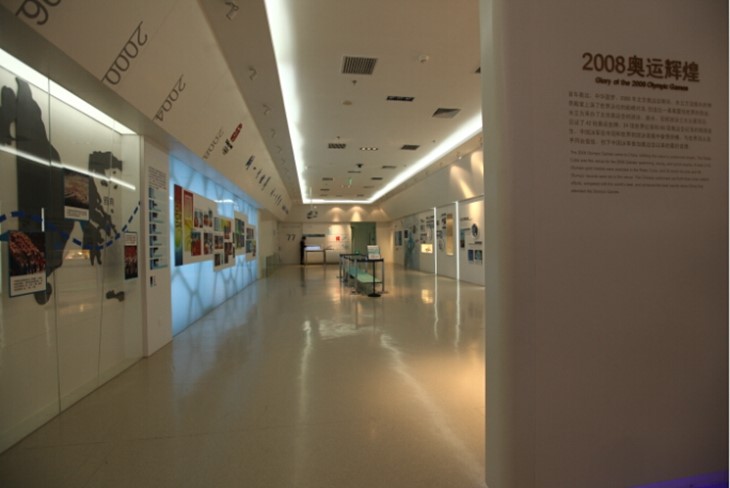
Water Cube Secret Exploration Hall
This hall reviews how the magic structure of the Water Cube was built. The rich array of objects and high-tech demonstrations help visitors discover the building's three main philosophies of "Ecology, Science and Technology, and Humanism" that the structure reflects and enables.
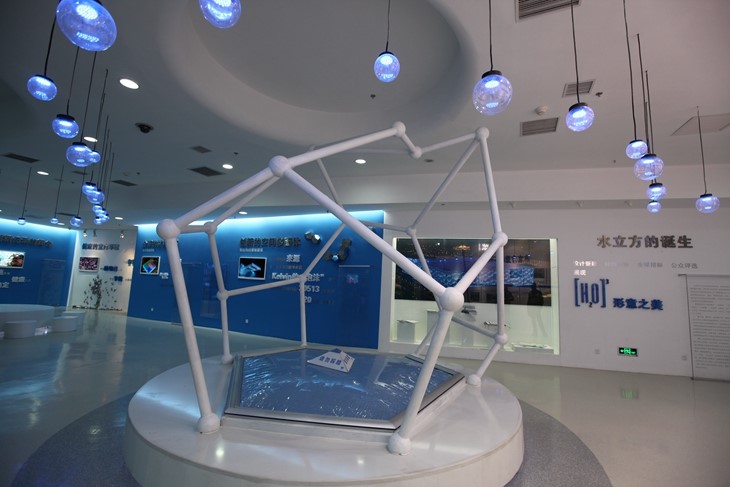
Water Droplet Theater
Spanning about 200 square meters, the Water Droplet Theater has 147 seats and can display 3D and HD laser films using advanced digital laser projection equipment. It can also be used as a conference room and a site for commercial promotions and other commercial and cultural activities.
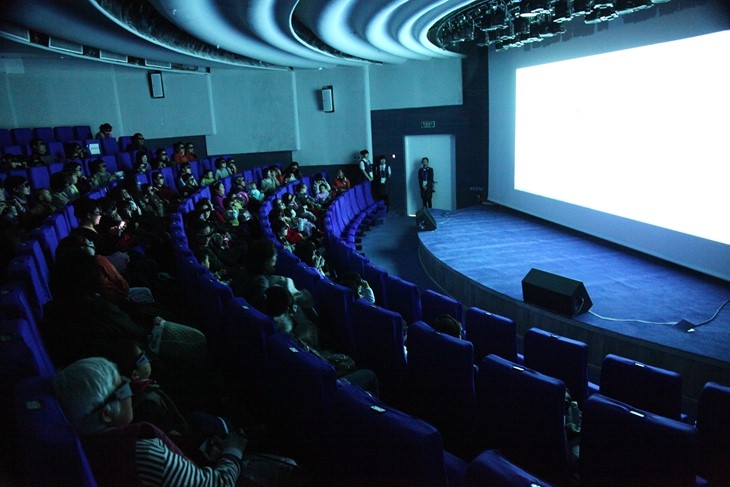
Side Buildings
TheWater Cube features two smaller buildings: a four-floor building on the southern side and a three-floor building on the north. They are replete with retail shops, coffee houses, a POP bar, a performance and film hall, rehearsal rooms, and small multi-functional halls.
They serve as sites for selling sportswear and gear, fashionable goods, and souvenirs, as well as sites for catering, coffee, tea, and other services for business talks and pleasure. They also offer a space for exhibitions, product promotion, conferences, parties, sports events, recreational activities, and high-end business talks.
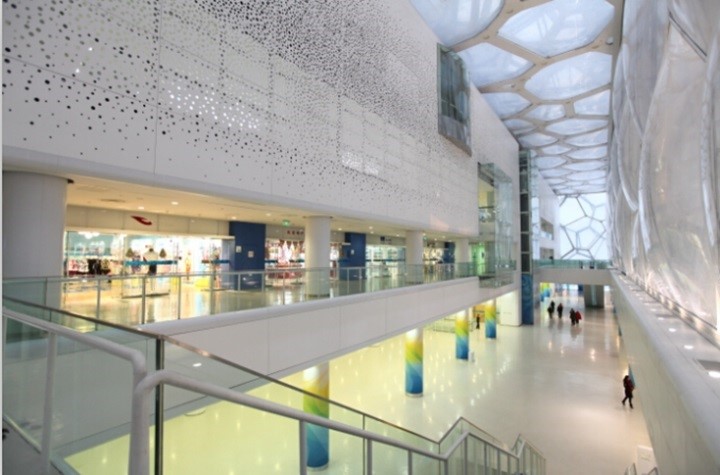
South Square
The South Square is an outdoor activity area on the southern flank of the Water Cube. Covering 10,000 square meters, it accepts bookings for large-scale public relations activities, the performing arts, and exhibitions.
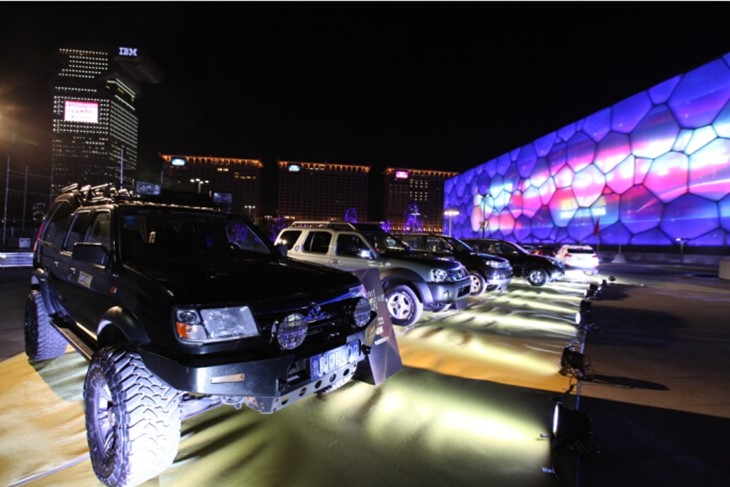
Opening Hours:
Peak season: 9 a.m - 10 p.m. (visitors must start to leave at 9:30 p.m.)
Off-peak season: 9 a.m. - 7 p.m. (visitors must start to leave at 6:30 p.m.)
Working Hours of the Box Office:
Peak season: 9 a.m. - 8:50 p.m. (no admission after 9 p.m.)
Off-peak season: 9 a.m. - 5:50 p.m. (no admission after 6 p.m.)
Specific working times shall be subject to opening times of the venue.
Ticket prices:
Full price: RMB 30 yuan per ticket
Half price: RMB 15 yuan per ticket
Inquires: 010 - 84370112/84370116
Complaints and rescue: 010 - 84370125
Private guided tours: 010 - 84370117
For tourists:
1. Ticket prices for tourists:
Full price: RMB 30 yuan per ticket
Half price: RMB 15 yuan per ticket
2. Half-price tickets apply to:
People between the age of 60 and 64 with a valid "elderly certificate" or valid ID card; soldiers (including armed policemen) in active service with a valid certificate; university, middle school, and primary school studentswith a valid "student card."
3. Complimentary visits apply to:
Water Cube donators with a valid document of proof; retired cadres with a valid "retirement certificate"; people above the age of 65 with a valid document; people with disabilities with a valid document; children aged or under 6, or of or below 1.2 meters tall and accompanied by an adult with a ticket.
Notes:
Documents mentioned above must be issued by relevant departments within the People's Republic of China (including Hong Kong, Macao, and Taiwan) for individuals to enjoy discounted entry.
Those who enjoy discounted tickets must show the relevant original documents when buying tickets and at the entry check-in point. Those who enjoy complimentary visits must show the relevant documents at the check-in point.
Groups entitled to the above preferential policies may dial hotlines 010 - 84370112 and 84370116 for consultation and booking.
Beijing National Aquatics Center Co., Ltd. reserves the right to the final interpretation of the preferential policies.
For travel agency tour groups:
1. Ticket prices for tour groups:
Full price: RMB 21 yuan per ticket
Half price: RMB 15 yuan per ticket
2. Ticketing instructions:
The assigned tour group leader or tour guide for each travel-agency-led group will be required to purchase group tickets at the group ticket office with their tour guide ID card and the group itinerary. Each group will be issued a group ticket. When purchasing discounted tickets, the travel agency must follow policy guidelines and provide the relevant documents.
3. Procedure for purchasing travel agency group tickets:
1). On the day of the visit, the tour guide must purchase tickets at the west window of the Water Cube with his or her tour guide ID card and the group itinerary. Fill out the invoice registration form if an invoice is required.
2). The tour guide must enter along with all group visitors through Gate 7 on the west side of the Water Cube. The group ticket and itinerary must be provided for inspection at the time of entry into the venue. The tour guide will gain free admission with the provision of his or her valid tour guide ID card.
Tour guide appointment:
Tel. for guide service: 010 - 84370117
Guide appointment: Groups must make an appointment three days before visitation; reception hours: 9 a.m.5 p.m.
Guide commissions: RMB 100 yuan per tour (Chinese), RMB 150 yuan per tour (English). Tours are subject to a time limit.
Visitor regulations:
1. Please buy tickets at authorized ticketing offices in order to ensure your legitimate rights and interests. Tickets are non-refundable.
2. All visitors must pass through a security check. Lighters, explosives, or inflammable substances and devices, knives, and other dangerous articles cannot be brought into the venue. Pets are not allowed inside the venue.
3. Visitors are requested to stay in the designated areas within opening hours. Visitors are not allowed access to non-public and office areas. Visitors shall be responsible and provide compensation accordingly in the case of accidents or damage.
4. Please do not mark, fold, or damage the ticket's QR code. In the event that the QR code cannot be recognized and the ticket holder cannot enter the venue, the ticket purchaser shall take responsibility.
5. Without permission, visitors cannot make, copy, or utilize any photographs and audio-visual materials related to the venue. Visitors may not use photographs or audio-visual materials related to the venue for any commercial purposes.
6. The entire venue is non-smoking. Please keep the venue clean and hygienic.
7. In case of the adjustment of opening hours, please visit the official website of the National Aquatics Center (www.water-cube.com) or the official WeChat for further details, or check for notices at the entrance. In case of large-scale events, please follow the venue's temporary arrangements.
8. In the case of swimming competitions or large-scale events, visitation to the competition hall will be suspended.
9. The Beijing National Aquatics Center Co., Ltd. reserves the final right to interpret the Visitor Regulations.
Parkling lot service hours: 6 a.m.-10 p.m.
Parking Fee: RMB 5 yuan per hour
Capacity: 200 vehicles (fewer than 200 during hours for large-scale events)
Note: The parking lot is only open to small vehicles (≤7 seats)
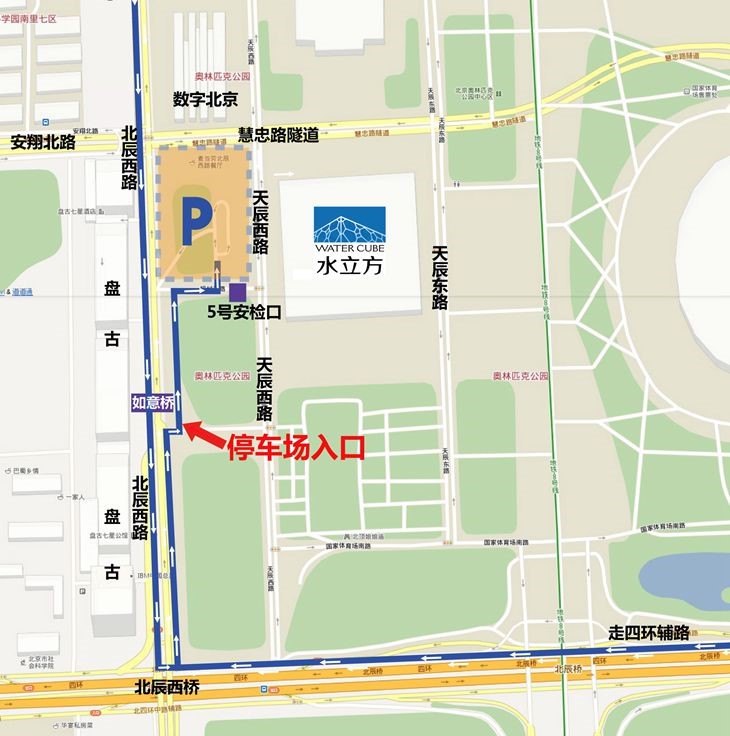
The "Experience Beijing" ice sports testing program came to a successful end on Saturday as Beijing 2022 welcomed its 300-day countdown. Events of six ice sports were staged in five Olympic venues in downtown Beijing during the 10-day tests.
With three of the venues being legacies of the 2008 Summer Games and advanced technologies in place, Beijing manifests its determination to host an environmentally-friendly Games that are also safe under COVID-19 scenarios through the testing program.
Transferable stadiums
How long does it take for a basketball court to be converted into an ice hockey rink?
The answer from the Wukesong Sports Center is -- six hours.
In six hours, the stadium that once witnessed Team US beat Spain for men's basketball gold in 2008 can set the stage for women's ice hockey competitions, with quick ice-making and adjustment in the dehumidification system.
"That's very good for the whole sustainability of the games and going forward," said William Freyr Huntingdon-Williams, a diplomat invited to watch a test game at the venue.
"Now the newest thing here, of course, is the new technology in ice-making, which we've been told is much more environmentally friendly, which we're very pleased," the first secretary and deputy head of mission at the Embassy of Iceland added.
Huntingdon-Williams is referring to using carbon dioxide instead of ozone layer-harming Freon as refrigerants in ice-making, which will reduce carbon emission equivalent to that of 3,900 cars a year, cutting the number to nearly zero.
The technology is also applied in the Capital Gymnasium, a 53-year-old venue renovated to host figure skating and short-track speed skating competitions. Both events' top skaters will compete on the same rink, but with different requirements of the ice surface.
According to Remy Boehler, head of the ice-making team, in preparation for the Beijing 2022 Winter Games, figure skaters need "softer" ice to better support jumps, while short track speed skaters favor harder ice for more speed.
With the two sports being contested only five hours and a half apart on Day 3 and taking turns to put on a show on the rest of the competition days as the latest Beijing 2022 schedule indicates, a smooth transition is essential to setting the stage for skating feasts.
"This is the only venue that has to switch between two sports in the middle of a day, which gives us huge stress during these testing events," said Ding Dong, head of the Capital Gymnasium venue operation team.
That's why the transition was conducted seven times in six days during the testing program to get fully prepared for the game-time scenario, and Boehler and his team only needed two hours to do so.

Also undergoing transformation was the National Aquatic Center, where Michael Phelps completed his eight-gold-winning epic back in 2008. The "Water Cube" was frozen into an "Ice Cube" for the first time in 2019 and later melted back in May 2020. In the past 10 days, it hosted test runs of curling events after the transferable rink was put up for curling events.
"Thanks to the Winter Games, the venue got its facility upgraded, and energy consumption lowered. Its new form will bring new income, and the cost of water-ice conversion is much lower than building a new venue," said Yang Qiyong, general manager of the venue.
Post-game utilization
Making stadiums transferrable is not only preparing for a successful Olympic Winter Games but also making sure they can satisfy people's different needs in different seasons.
Like Beijing 2008 did in leaving legacies for the city and the development of the sport across China, Beijing 2022 hopes to help fuel the passion for winter sports in the country and provide them with enough facilities to enjoy themselves.
As the only newly built ice sports venue in the Beijing competition zone, the National Speed Skating Oval boasts an ice surface of around 12,000 square meters. It can seat 12,000 spectators, making it the largest speed skating venue in Asia.
Apart from technology highlights, including using carbon dioxide in ice-making and precise controlling temperature and thickness of ice surfaces, the venue's multi-functionality also sets the example in post-game utilization.
Ma Jin, the design director of the ice-making project, told Xinhua that the ice in the oval had adopted a submodule control unit, dividing the ice surface into several areas and making ice according to varying standards.
During ordinary times, it can receive more than 2,000 citizens at the same time and be utilized for ice hockey, speed skating, figure skating, curling, and other ice sports at the same time.
"The purpose is to give full consideration to post-competition utilization and provide hardware support for mass fitness and to meet various needs," he said.
Similarly, the National Indoor Stadium features ice surfaces that can change size for standard ice hockey or figure skating field of play. In fact, the two surfaces were newly added to the 2008 gymnastics, trampoline, and handball venue for men's ice hockey competitions during Beijing 2022.
Hi-tech makes games safe and fun
Apart from Beijing's promise to host a "fantastic, extraordinary and excellent" Olympic Winter Games, "safe" is also a keyword as the COVID-19 pandemic is still ongoing. To ensure everyone involved is safe and provide the audience with the best possible watching experience, the organizers employed state-of-the-art technologies during the testing program.
Smart watch-like intelligent thermometers with chips inside are employed in the Wukesong Sports Center to monitor personnel's real-time body temperature. They can achieve preciseness of 0.05 degree Celsius and users can check their body temperature with taps on their phone.
In the National Indoor Stadium, with the help of 40 cameras and a 3D reconstruction of the visual, "free visual angle" technology allows spectators to choose their angle of watching matches. It also functions in refereeing and players and coaches reviewing the game.
There's also good news for broadcasters. With self-help obstacle avoidance navigation, they don't have to carry themselves heavy equipment thanks to logistics robots shuttling within the working area and canteen to transport items.
In fact, they don't need to bring them on-site in the first place. Cloud broadcast system enables them to edit, distribute and store all their materials remotely on the cloud and even live stream events with their program directors back in their own country.
Apart from that, journalists can interview athletes from a different room to avoid contact, and mix zones can also be set up remotely.
"We believe these technological innovations will bring Beijing 2022 to spectators all over the world in a more spectacular way," said Gao Bo from the media operations department of the BOCOG.

Our Wechat

Our Production